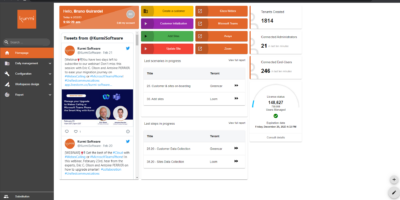All Resources

Blog
ISO 27001 Certification: A Milestone in InfoSec Excellence for Software-as-a-Service Delivery


Blog
How Close is AI to Running All Enterprise Communications? – An EM360 Podcast
Read More about How Close is AI to Running All Enterprise Communications? – An EM360 Podcast

Blog
The Future of Enterprise IT – A Microsoft Teams Insider Podcast Episode
Read More about The Future of Enterprise IT – A Microsoft Teams Insider Podcast Episode

Blog
The New Unified Communications Challenges – An article on The Fast Mode
Read More about The New Unified Communications Challenges – An article on The Fast Mode

Blog
Save Money and Boost Performance with UC&C Provisioning Automation
Read More about Save Money and Boost Performance with UC&C Provisioning Automation

Blog
10 Unified Communications Automation Features to Look for in a Third-Party Provisioning Tool

Blog
AI Powered Enterprise Collaboration and Other Insights from Zoomtopia 2023
Read More about AI Powered Enterprise Collaboration and Other Insights from Zoomtopia 2023

Blog
Kurmi Provisioning Suite Shines at Cisco Impact 2023
Read More about Kurmi Provisioning Suite Shines at Cisco Impact 2023